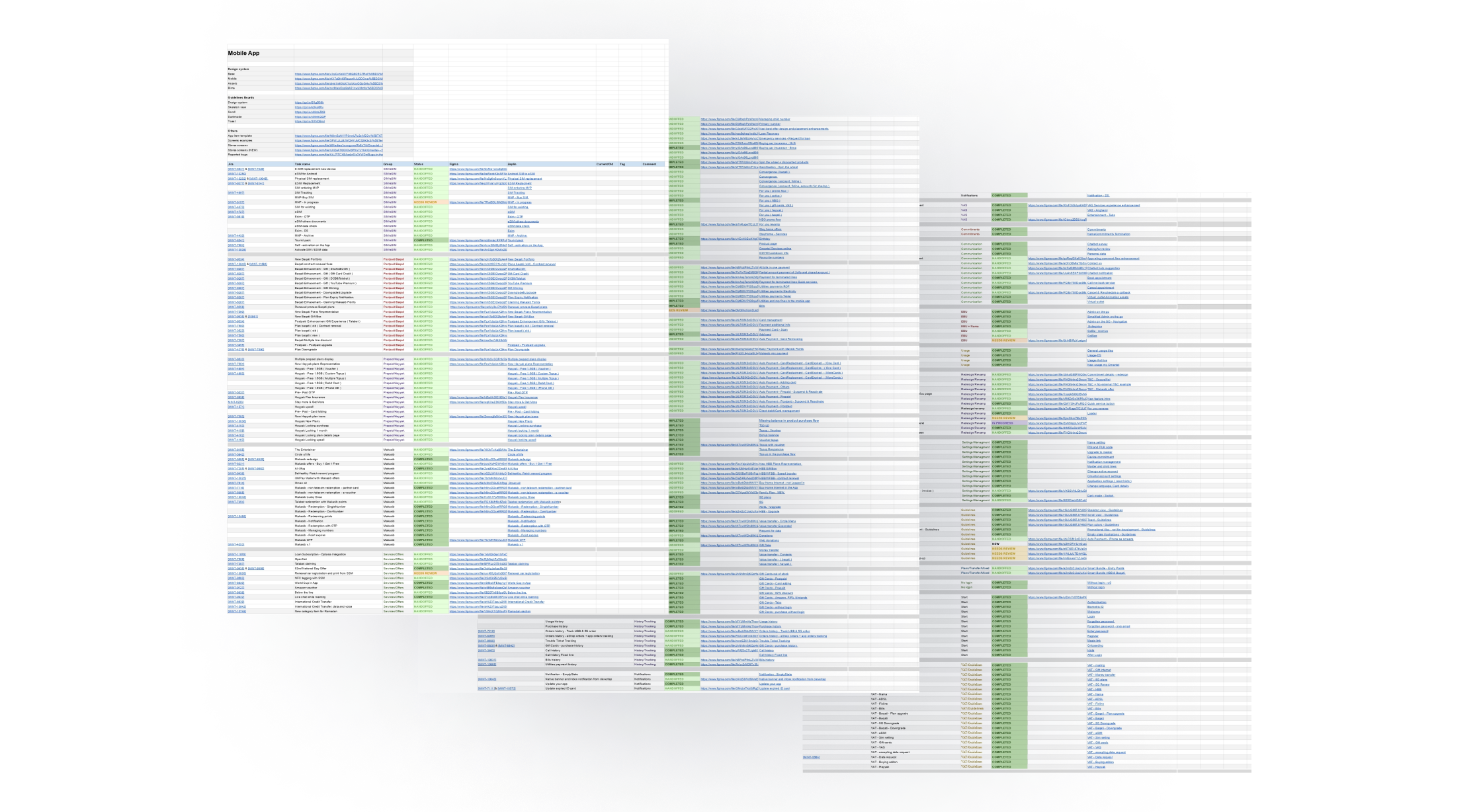Knowledge Transfer - Omantel
Client:
Omantel
Timeframe:
4 months

Introduction
This case study outlines the comprehensive process of a knowledge transfer project for Omantel, following several years of collaboration with the design studio where I worked. The primary objective was to facilitate the transition of the visual design responsibilities to a new vendor.
My role
- Comprehensive Data Collection: Gathering detailed information from disparate sections of the project, each with its unique set of requirements and documentation.
- Task Flow Mapping: Integrating task flows with existing documentation in Jira and Zeplin, ensuring a coherent understanding of project workflows.
- Information Structure Development: Creating distinct information structures for each project component, tailored to facilitate easy navigation and understanding.
- Visualization of User Flows: Presenting key user flows graphically, complete with links to more detailed flows, to provide a clear, intuitive overview of the user experience.
- Mapping in Figma old tasks that were designed in Skech and exported to Zeplin.
Problem
We did not receive any guidelines on how the transfer should proceed or what specific documents would be necessary for the implementation of the new company.
Approach
Collaborative Workshops: Initiated the process with a workshop to devise a comprehensive plan for creating the necessary documentation. This collaborative approach allowed team members to share their visions and consolidate a unified strategy for the knowledge transfer.


Process optimization: Wanting to make our work easier, I created a table where I placed all the necessary information we need and asked the designers to fill it in.

Information Structuring: After gathering all necessary information, it was organized in Excel into categories corresponding to the different project departmensts.

Information architecture: The next step was to create an IA for each of the departments. The biggest challenge was developing this architecture for the application department. In this step, I was assisted by a more experienced colleague who had been responsible for the entire application development project from its inception.

Visual Mapping: Developed visual site maps to present the user journey paths, ensuring that the new vendor could easily understand how users navigate through the various functionalities. This step was essential in visualizing the project’s user experience comprehensively.

Outcomes
- Structured Knowledge Base: Successfully compiled and structured a comprehensive knowledge base encompassing all aspects of the project, ready for handover to the new vendor.
- Clear User Flow Visualization: The creation of detailed visual site maps provided a clear representation of user flows, facilitating a deeper understanding of the project’s user experience design.
- Seamless Vendor Transition: The thorough and organized approach to the knowledge transfer ensured that the new vendor had all the necessary information to take over the project’s visual design responsibilities
Conclusion
The strategic knowledge transfer project for Omantel not only underscored the importance of detailed planning and organization in vendor transitions but also highlighted the effectiveness of collaborative efforts in achieving seamless project continuity. This case study exemplifies the comprehensive approach required to navigate the complexities of handing over large-scale digital projects, ensuring that the new vendor is well-equipped to uphold and advance the project’s objectives.